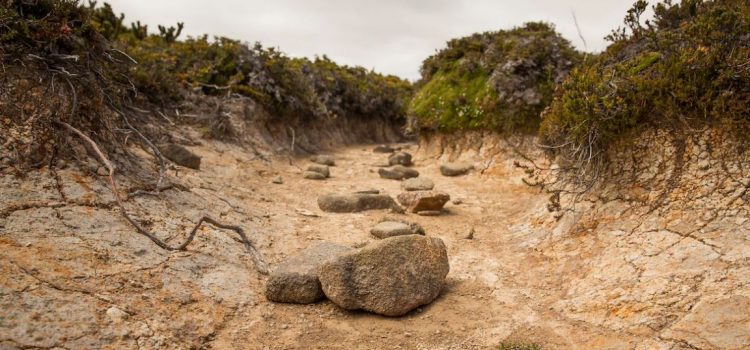
This is a free excerpt from one of Shortform’s Articles. We give you all the important information you need to know about current events and more.
Don't miss out on the whole story. Sign up for a free trial here .
How much does water rationing actually help? What are the impacts of water scarcity around the world? Where is it the worst?
Across the globe, a growing number of regions are implementing water rationing to address water scarcity. But as climate change fuels higher temperatures and droughts, rationing might not be enough to ensure that the billions who face shortages have the water they need.
Here’s a look at the effects of water scarcity and what can be done to help.
Water Scarcity Is Spreading
Water rationing is a measure that temporarily suspends water supply in regions facing the effects of water scarcity. Rationing controls water consumption and ensures the distribution of limited water supplies to preserve public health and safety.
Water scarcity stems from a combination of factors, including inadequate water supply and insubstantial infrastructure to provide water—issues that vary by region. For example:
- The Middle East and North Africa region suffer the greatest water stress globally due to limited rainfall and rapid population growth.
- The Democratic Republic of Congo gets adequate rain but faces water shortages because of substandard infrastructure and water mismanagement.
- The US’s Flint, Michigan and Newark, New Jersey suffer water stress as a result of outdated infrastructure that’s contaminated water sources.
The impacts of water scarcity are far-reaching and can be highly destructive to societies, with the capacity to:
- Negatively impact public health, economic development, and global trade.
- Fuel mass migration and human conflict.
Rationing Around the World
A growing number of countries, states, and local communities have implemented, or will have to implement, water rationing to address shortages, including:
- Costa Rica: In July, authorities implemented water rationing for the 275,000 residents of the country’s capital. Costa Rica is experiencing an imbalance in water supply and demand as it transitions from its dry to its tropical rain season—a situation expected to worsen as cyclical El Niño conditions increase temperatures and potentially fuel drought.
- France: After experiencing its warmest and driest winter in six decades, this spring France implemented water rationing in its hardest-hit provinces. The move, unprecedented at this time of year, aims to prevent a drought crisis that would hurt agriculture, trade, and energy supplies.
- India: Ongoing water shortages in India have led some municipalities to implement their own water rationing systems—including “block tariffs” that give each household an initial free or cheap “block” of water, then raise the price on subsequent blocks.
- UK: To address a predicted shortage of four billion liters of water a day by 2050, the UK government launched a Plan for Water, aimed at dramatically reducing household water usage. Opponents say the plan is a precursor to rationing that will unfairly burden consumers with water management—a responsibility better borne by the water companies, regulators, and government whose mismanagement has fueled shortages.
- London: Environmentalists say that water rationing will be necessary imminently due to over-abstraction (taking water from the environment), excessive use, and loss of water through leaking pipes. They argue that chalk streams (freshwater ecosystems) that feed the capital’s water supply are running dry and that over the past year, the city’s main water supplier has lost 602 million liters of water a day through leaking pipes. The supplier contends that one-third of its water loss stems from “unmeasured consumer use”—not ailing infrastructure—and that it has no plans to ration water use.
- Arizona: Sustainability scientists say that water rationing is inevitable for Arizona and the West to address inefficient water use, population growth, and worsening drought. The Colorado River Basin, from which seven Western states draw their water, is experiencing record low levels.
Example: A Closer Look at the Colorado River
The Colorado River provides water and hydropower to tens of millions of people. It also feeds into two of the US’s largest reservoirs—Lake Powell and Lake Mead—and it irrigates farmland that produces vegetables for grocery stores all over the country. In short, it’s a hugely important water source, and not just for people who live in the Western US.
However, the Colorado River has been rapidly shrinking due to mismanagement and the effects of climate change. The Colorado River Compact of 1922, which sets current allotments for the Basin states, was agreed upon following an unusually wet period—and its terms have proved unsustainable during the 23-year “megadrought” hammering the western US. Therefore, a new arrangement is needed to set more realistic and sustainable water allotments.
Looking Ahead
Experts say that a major obstacle to addressing water scarcity is the absence of a universal global framework to combat the problem comparable to those for climate change and biodiversity conservation. Without a binding agreement among world governments to address the issue, regions around the world respond to water strain in a scattershot, often reactive manner inadequate to meet the growing water-related challenges posed by climate change.
To address water scarcity issues, experts say that global leaders should develop a holistic water supply and retention strategy rooted in best practices currently employed by governments and partner organizations.

Want to fast-track your learning? With Shortform, you’ll gain insights you won't find anywhere else .
Here's what you’ll get when you sign up for Shortform :
- Complicated ideas explained in simple and concise ways
- Smart analysis that connects what you’re reading to other key concepts
- Writing with zero fluff because we know how important your time is






